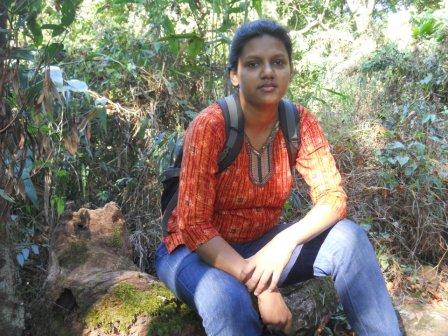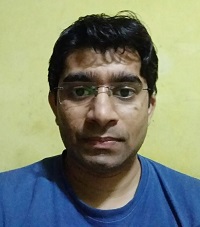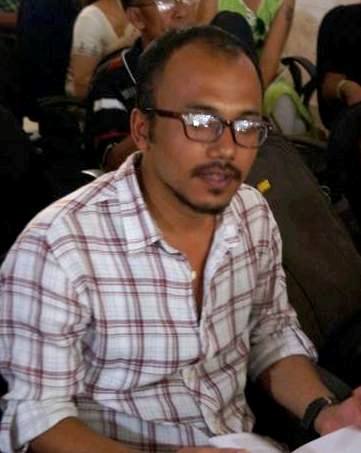Rahi Gaikwad
 I remember a chapter in my class ten SSC (State Secondary Certificate) board textbook. It was an excerpt from Nehru’s ‘Discovery of India’. The passage spoke of Nehru’s idea of India; it is perhaps among the best known lines of the book.
I remember a chapter in my class ten SSC (State Secondary Certificate) board textbook. It was an excerpt from Nehru’s ‘Discovery of India’. The passage spoke of Nehru’s idea of India; it is perhaps among the best known lines of the book.
Nehru said, “All of us I suppose, have varying pictures of our native land and no two persons will think exactly alike. When I think of India, I think of many things: of broad fields dotted with innumerable small villages, of towns and cities I have visited; of the magic of the rainy season which pours life into the dry parched-up land and converts it suddenly into a glistening expanse of beauty and greenery, of great rivers and the flowing water; of the Khyber Pass in all its bleak surroundings; of the southern tip of India; of people, individually and in the mass; and above all, of the Himalayas, snow-capped, or some mountain valley in Kashmir in the spring, covered with new flowers, and with a brook bubbling and gurgling through it. We make and preserve the pictures of our choice, and so I have chosen this mountain background rather than the normal picture of a hot, sub-tropical country. Both pictured would be correct, for India stretches from the tropics right up to the temperate regions, from near the equator to the cold heart of Asia.”
Every time I read this passage then as a student, I felt captivated by the beauty and intensity of Nehru’s poetic imagery.
Not everyone can imagine his/her native land in this way. It takes the power of privilege to imagine a vast geography and speak on behalf of a deeply divided people; to be able to feel moved by the beauty of a flower or a brook and connect it to national pride.
I guess the untouchables of Mahad in Maharashtra would have been able to praise the sweetness of the ‘Chavdar’ (tasty) lake. But first they had to taste its water. For that they had to launch a satyagraha led by Dr. Babasaheb Ambedkar in 1927.
Dr. Ambedkar also spoke of an idea of India – a possibility to be achieved rather than what was in existence. Far from a personal idyll, his Constituent Assembly speech on 25th November, 1949, raises more concerns about the Indian nationhood itself.
Dr. Ambedkar said: “I remember the days when politically-minded Indians, resented the expression “the people of India”. They preferred the expression “the Indian nation.” I am of opinion that in believing that we are a nation, we are cherishing a great delusion. How can people divided into several thousands of castes be a nation? The sooner we realize that we are not as yet a nation in the social and psychological sense of the world, the better for us. For then only we shall realize the necessity of becoming a nation and seriously think of ways and means of realizing the goal…In India there are castes. The castes are anti-national. In the first place because they bring about separation in social life. They are anti-national also because they generate jealousy and antipathy between caste and caste. But we must overcome all these difficulties if we wish to become a nation in reality.”
A nation is thus possible only by the annihilation of caste – a central requirement for nationhood.
His speech was not taught in any school textbook, at least when I was a student. So I can say that for a long time I was delusional. Perhaps that was the intention.
The idea of India consumes the range of discourse from left to right. Upper caste ideologues have defined nationalism and anti-nationalism both, based on their respective ideologies and political stances, putting the question of caste to the periphery. By and large, among them, they have fixed the contours of what gets termed a national discourse. To be able to define, label and conflate your political interests with nationalism is a sign of caste privilege.
It is in this context that I see the JNU protests. After Rohith Vemula’s death there was a semblance of a larger debate on caste and an indication that Dalit mobilization was becoming stronger. With the arrest and attack on Kanhaiya Kumar and the journalists in the Patiala House court the tide has turned. Exit caste, enter free speech.
The countless struggles of the Dalit bahujans pre- and post-independence have little to do with the binaries of the left and right, the notions of national and anti-national or concerns such as sedition and free speech. What is free speech to the scores of Dalit and adivasi children who have no platform to articulate their realities using their own agency? Who needs the threat of sedition when you can get killed in a caste massacre?
As a member of the media, I am of course disturbed by the attack on journalists in court and equally appalled by the attack on Kanhaiya Kumar and the students.
However, the national versus anti-national discourse defined by the self-proclaimed revolutionary university JNU and the Indian right in television and print debates, is, to refer to Dr. Ambedkar’s view, delusion-inducing and self-serving.
The Dalit bahujan articulation is an anti-caste discourse, which never assumes a national stature. On the other hand, what we are seeing at JNU is an intra-caste discourse, which easily gets pitted as a national discourse.
Nearly 67 years after Dr. Ambedkar’s speech, caste stands on firm the ground. There is a rise in the number of caste crimes. A large swathe of Dalit population continues to be landless and lives in one room houses. (‘Dalits still left out‘ – Christophe Jafferlot, Indian Express).
In this backdrop, if the nation debates nationalism, the question that comes to mind is whose nation is it anyway.
~~~
Rahi Gaikwad is a journalist based in Mumbai.










